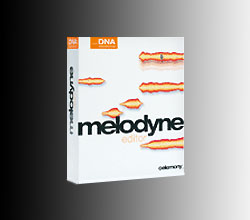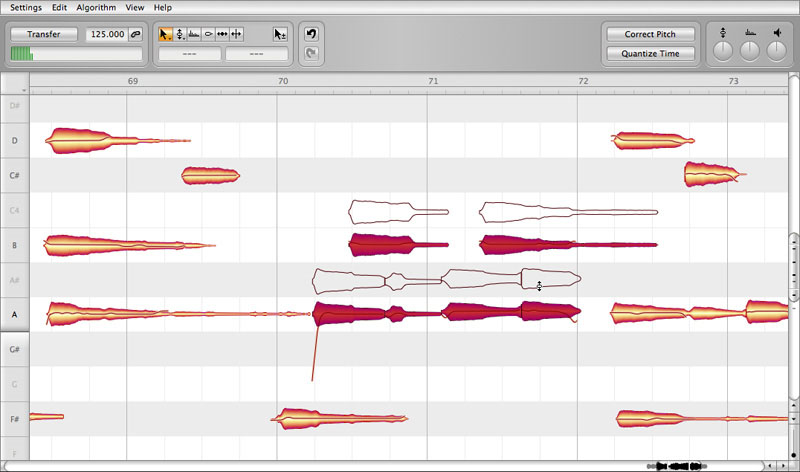
Ever since the creation of the first DAW, no other software has caused so much ink to be spilled and generated such expectations.
The Direct Note Access (DNA) technology, which was introduced by Celemony at Musikmesse 2008, is one of those holy grails no one ever thought to be accessible because it allows you to edit single notes of a polyphonic audio recording. Is it some sort of de-mixing? Yes and no! Is it a revolution? You bet!
Before we dive into the innards of the program, a brief summary about Melodyne is necessary for those of you who don’t know it yet.
Celemony created Melodyne in the wake of the Antares Autotune, which allowed you to edit the pitch of an audio recording. Melodyne worked under the same principles (pitch shifting and time stretching with formant control) within an interface conceived for musicians instead of sound engineers.
After detecting the notes, you had several tools for pitch, time and amplitude correction, so you could actually edit audio recordings as easily as MIDI parts, under one condition: the audio recording had to be monophonic.
The software’s excellent algorithms and idiot-proof user interface gave lots of product ideas to their partners (like Ueberschall, who developed customizable loop banks for the Melodyne engine) and competitors.
For instance, Autotune got a new user interface (see the Autotune EVO), several competitors appeared (Waves Tune, Zplane) and the main audio sequencers integrated Melodyne-like functions (Steinberg introduced VariAudio in Cubase 5 and Cakewalk did the same with AudioSnap for Sonar).
While competitors were still trying to catch up with the first Melodyne, Celemony changed the game again by offering individual note editing in polyphonic recordings. During the product presentation at Musikmesse, Melodyne’s boss had a blast changing a guitar minor chord into a major chord using a simple MIDI keyboard.
And to top that, he also modified the trumpet of a Miles Davis recording without changing the double-bass or the drum part. Impressed? There are no words to express it. The presentation of the product had such an impact that some people thought it was a hoax.
That, together with the time it took for the official release to come out raised serious doubts among the audio community. But…
Melodyne Editor, the first software using Direct Note Access technology (DNA) has finally hit the stores. And it works…
















